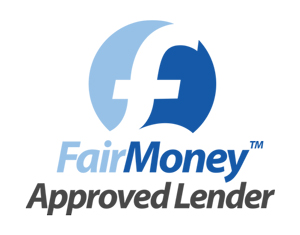It’s a funny old world!
Today we're welcoming a Guest Blog to the Fair Money website by Stephen Lawrence, the National Sales Manager from Norton Finance Group who we at FairMoney are proud to call partners in Fairness.
The Credit Crunch
In September 2007, the UK saw queues outside branches of the Northern Rock as customers waited to withdraw their life savings. The run on the bank was initially supported by the Bank of England but as the situation worsened, the result was inevitable, and Northern Rock was taken into state ownership on the 22nd February 2008. What then followed was a financial crisis that swept through world markets and eventually led to Lehman Brothers, the fourth-largest investment bank in the U.S, filing for bankruptcy on the 15th September 2008.
After the 15 September there was “Armageddon” in the finance markets that led to many lenders in the UK closing for business. The result being, lending on mortgages and unsecured loans fell dramatically throughout the UK. In an attempt to stimulate the economy and encourage lending, the Bank of England reduced bank base rates from 5.75% in 2007 to 0.50% on the 5th March 2009. This strategy was initially unsuccessful as the general public panicked. The UK began to reduce household spending, started saving and as a result, the economy went into recession.
The Interim
Recession and gloom descended on the UK, and affected those lenders still operating in the finance market, their reaction was to tighten lending criteria, reduce loan amounts and significantly reduce loan to values on mortgages and secured loans. Those homeowners and tenants who had existing or historical adverse and wanted a loan were instantly rejected by lenders. The era of the loan and mortgage prisoner commenced and this sustained until 2013.
Salvation
Since 2013, the UK economy has shown a recovery in comparison to many other countries and a “feel good factor” has returned. The Bank of England base rate remained unchanged and the “feel good factor” provided a stimulus for households to start spending again. Lenders were quick to see this change and in 2013 & 2014, new entrants came into the finance market, in order to attract a percentage share. Competition between new and existing lenders was the catalyst for improved loan terms for customers, as each sought for an improved share of a growing market. As a result, some lending criteria was relaxed. Loan amounts increased, and loan to values up to and above 95% returned with some secured loan lenders. Most notably, some loan and mortgage prisoners have been released, as there are now lenders in the market that will offer loan products to customers with current or historical adverse (subject to stringent income checks).
How can FairMoney customer's benefit from the recent lender changes?
Homeowners who can provide income proof have two lender options, secured or unsecured loans, whereas Tenants with income proof can only be offered unsecured loans.
Secured Loans for Homeowners
- Charge rates from 4.85%
- Loans amounts up to £500k more on request
- Most loan purposes considered including repayment of debt management plans, tax bills and debt consolidation
- Up to 95% of the property value plus 2 lenders have no LTV cap (non-equitable charge)
- A client with current, mortgage arrears and serious adverse, with a suitable explanation and income proof can have a loan up to 70% of the property value. The lender must satisfy itself that the loan will place the homeowner in a better financial position. In many cases lenders will ignore historical adverse that is more than one or two years old. Lenders who ignore adverse after one year will credit score and adverse will effect this score
- A client with historical adverse over two years old can have a loan up to 85% of the property value, again subject to a suitable explanation and income proof
- In most cases lenders will ignore small defaults, CCJ’s, mail order credit and communication supplier credit which will allow the homeowner to obtain a prime charge rate and a high percentage loan on their property value
- Loans are available throughout the UK including N Ireland and Scottish Isles
Unsecured Loans for Homeowners & Tenants
- Charge rates from 4.40%APR
- Maximum loan £25,000
- Lenders credit score which means normally only homeowners and tenants with no adverse qualify for a loan. Where the adverse is more than 3 years ago, a loan may be approved
- Tenants can obtain a guarantor loan where the guarantor is a homeowner
- Loans are available throughout the UK including N Ireland and Scottish Isles
Conclusion
Most homeowners will be able to obtain a secured loan subject to them being able to prove their income and have the ability to manage their monthly expenditure and loan commitments. Tenants have less unsecured loan options and need to clearly demonstrate their ability to repay the loan.
As lenders seek to increase their market share charge rates and lending criteria will continue to be reviewed and the beneficiary will be the customer.
Stephen R Lawrence
Group National Sales Manager
Norton Finance Group Ltd


